

No need to worry about whether colors match and pair well. Perfect harmony is so hard to master! A clean, white garden is pleasing in its simplicity. The goal? Introduce as many white blooms as can be, without forgetting rich, textured foliage to give the eye a focal point.
To learn more, read:
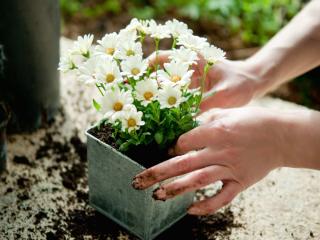 Bright colors typically do well in places with lots of light; pastel tones will shine in cooler more northerly place. And white? White does great everywhere! This defective pigment appears in virtually all types of flowers: it’s an “albino” trait. White, as a color, doesn’t attract insects, but most of the time flowers make up for it thanks to the fragrance they release. Indeed, white flowers often have the strongest scents of all.
Bright colors typically do well in places with lots of light; pastel tones will shine in cooler more northerly place. And white? White does great everywhere! This defective pigment appears in virtually all types of flowers: it’s an “albino” trait. White, as a color, doesn’t attract insects, but most of the time flowers make up for it thanks to the fragrance they release. Indeed, white flowers often have the strongest scents of all.
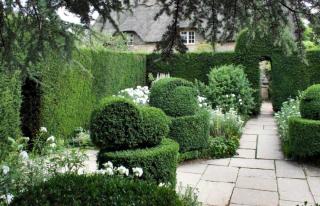 The term “monochrome” isn’t actually true: out of sheer necessity, you’ll need to pair your white flowers with green, a color all plants share to some degree! However, even here you have interesting options: silver-colored leaves, and leaves that have variegated foliage will do the trick. To avoid getting bored with a single-colored garden, it’s particularly important to set up different garden styles. Introduce rhythm to the garden with a few dominant specimens, filling in voids with other plants that might be more hazy or easily sway with the wind.
The term “monochrome” isn’t actually true: out of sheer necessity, you’ll need to pair your white flowers with green, a color all plants share to some degree! However, even here you have interesting options: silver-colored leaves, and leaves that have variegated foliage will do the trick. To avoid getting bored with a single-colored garden, it’s particularly important to set up different garden styles. Introduce rhythm to the garden with a few dominant specimens, filling in voids with other plants that might be more hazy or easily sway with the wind.
Of course, adding a few hints of pastel colors isn’t forbidden. You might even choose to plant a few stark spots of color that will highlight the whiteness of the rest of the garden. White will also seem more intense if you set a flower bed up in front of a dark-colored background. For instance, deep green yew or holly, or even purple leaved plants like the ‘Purpurea Pendula’ Fagus sylvatica, elder, Sambucus nigra ‘Gerda’ BLACK BEAUTY®, or smoke tree (Cotinus coggygria ‘Royal Purple’).
Even in low flower beds, dark backgrounds are possible: imaging white crocus emerging from a bed of black grass!
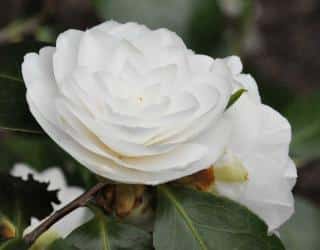 You have so many options here that it’ll help to narrow it down thanks to soil type, blooming dates, and flower shapes. Pair tall panicles (Campanula persicifolia ‘Alba’, Delphinium, Veronicastrum virginicum) together with umbels (Ammi visnaga) or capitulums (daisy) together with wispy shapes like those of astilbe, goat’s beard (Aruncus dioicus) or meadowsweet (Filipendula ulmaria).
You have so many options here that it’ll help to narrow it down thanks to soil type, blooming dates, and flower shapes. Pair tall panicles (Campanula persicifolia ‘Alba’, Delphinium, Veronicastrum virginicum) together with umbels (Ammi visnaga) or capitulums (daisy) together with wispy shapes like those of astilbe, goat’s beard (Aruncus dioicus) or meadowsweet (Filipendula ulmaria).
It goes without saying that there are also a great many white roses. One we find particularly well suited to white gardens is the famous Annapurna rose: it has dark green foliage (and a delicious scent, too!).
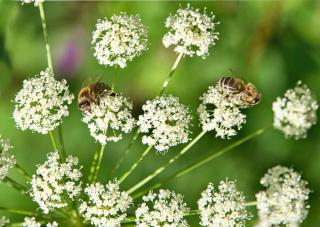
Aim to vary both the foliage and the entire structure of the plant.
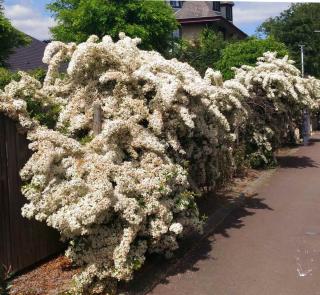
Walls and arbors can provide extra height, too, especially if you dress them with tight-blooming Plumbago Escapade White.
These will occupy spots near and between taller erect plants, so that the entire flower bed looks more balanced. Choose any shade of green, from light golden hues to nearly dark leaves, without forgetting to consider silvery ones and glaucus ones. In dry terrain, the gray leaves of Artemisia offer a wide range of texture, from the finest with Artemisia canescens and A. ‘Powis Castle’, to large, sometimes serrated leaves with A. ludoviciana ‘Silver Queen’, etc. You can finalize the bed with santolina, Helichrysum, lavender, rosemary, Anaphalis…
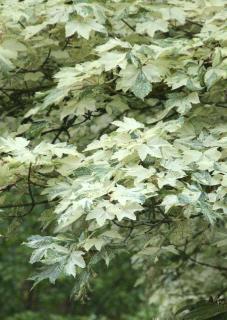
Read more: